1920s Candy: History & Fun Facts
Eating candy may not seem unusual or luxurious nowadays, but things with different with candy from the 1920s, if we hop back in history, we’ll find out that it has not always been as reachable as it is today. One might think that candy bar history is fundamentally connected to America, but it has origins in Europe, during World War I when candy bars were given to troops for energy.
Who will not develop a sweet tooth after eating candy bars daily? Of course, after World War I, soldiers took up the habit of eating sweets back in America, so confectioners in the USA followed the demand. What was the main goal of the new sweet makers? To outweigh the consumption of Hershey’s, which was dominating the planet’s candy business.
Please leave a review or any memories of this snack in the comments at the bottom of this page. Thank you!
When the candy bar boom started, every confectioner was trying to put anything in candy bars to please their customers. Fillings varied from marshmallows to dried fruits and vegetables. Companies were naming candy bars after famous or iconic people. Because of the transportation and refrigeration issues, regional companies dominated the local market, which tried to give their candy bars names to appeal to local pride.
We may have heard these stories from our grandparents, or connected popular candy bar names to iconic people. The truth is that no matter the name or origin, everyone enjoys a tasty bar of chocolate from time to time (some of us more often than others). Today we have tremendous amounts and varieties of candy, but what happened to the most popular candy from the 1920s that everyone enjoyed? Let’s find out.
Names of Most Popular Candy From the 1920s
- Baby Ruth Bar
- Dubble Bubble Gum
- Oh Henry!
- Charleston Chew
- Chuckles
- Goobers
- Peanut Chews
- Crunchie
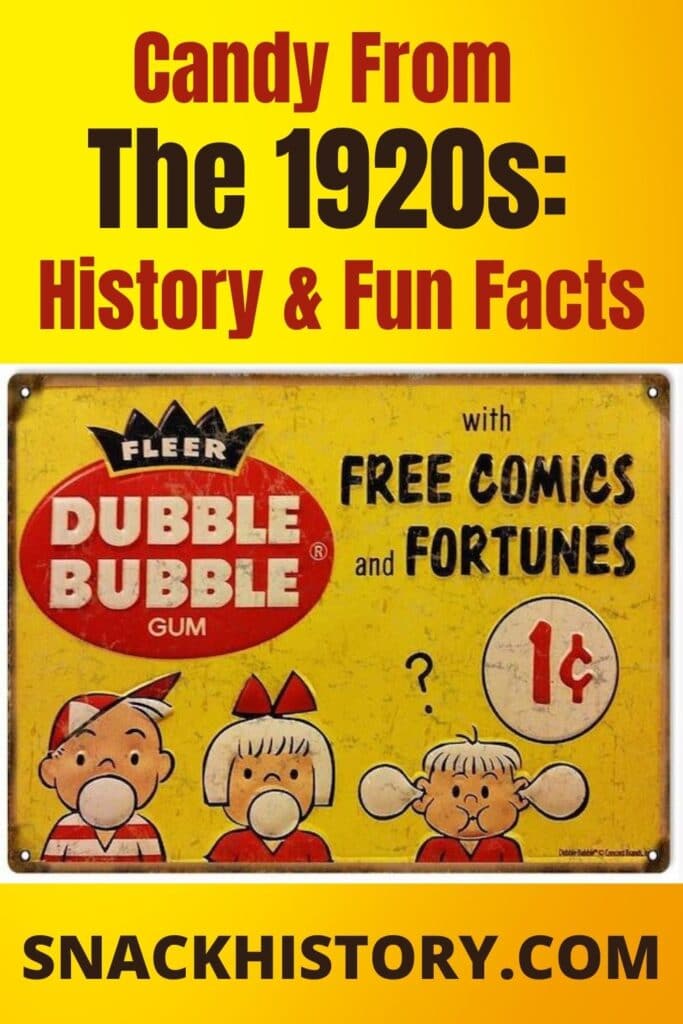
Most Popular Candy From the 1920s
The 1920s was a decade of change. Women’s fashion got rebellious, shiny cars appeared on the streets, and people started to move from rural areas to urban areas. Aside from lifestyle changes, candy companies also started to bloom. And that was when some very popular candy bars were introduced during the 1920s candy period.
1. Baby Ruth Bar
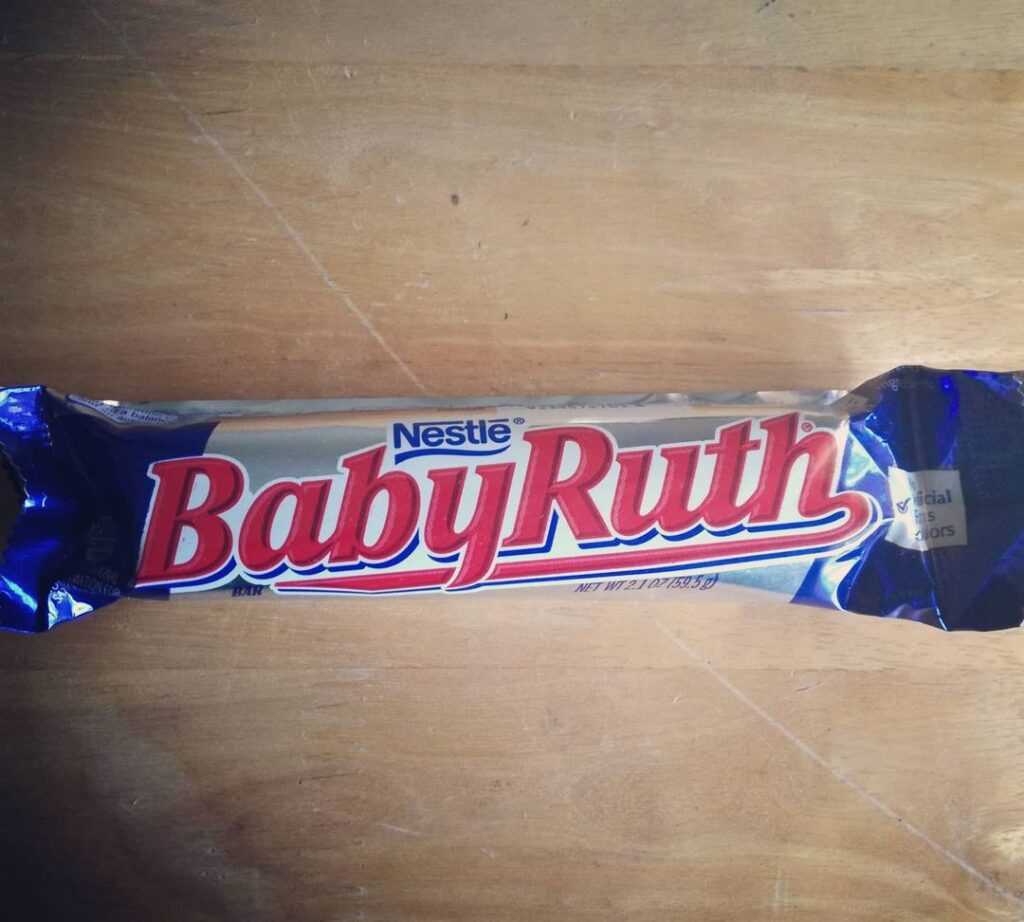
It was a bit of a controversy over who Baby Ruth Bar was named after. Or was it Babe Ruth? As the company claimed, the name was inspired by President Grover Cleveland’s daughter (not to pay copyright royalties to Babe Ruth), but Babe Ruth claimed otherwise. It was obvious that the name was taken from a famous basketball player, who was a rising star during the 1920s. No matter if it was Baby Ruth or Babe Ruth, the candy bar was a great success.
Company founder, Otto Schnering, reformatted the old brand, Kandy Kake, changed the name to Baby Ruth, and we got chocolate-covered candy bars, with peanuts, caramel, and nougat. Many factors played a role in Baby Ruth’s sensation, but the most important one was probably Schnering’s sensibility. He was selling Baby Ruth candy bars for 5 cents, which was half the price compared to other newly set up candy companies. A great advertisement played an enormous role in Baby Ruth’s success too. Who would not like a 5 cent “energy bar”? Or “a complete luncheon for 5 cents”? It took only five years for Baby Ruth to become the most successful candy bar ever created.
2. Dubble Bubble Gum
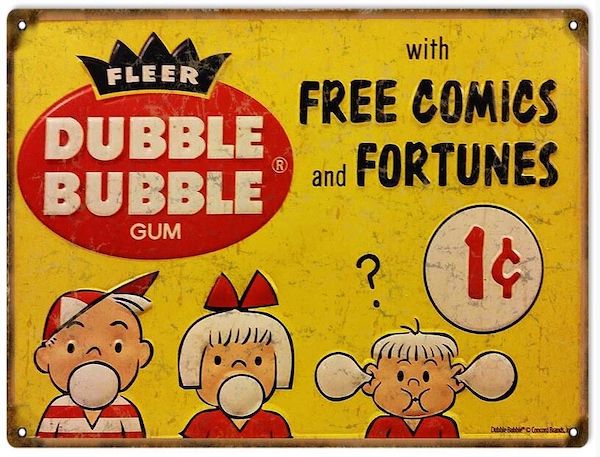
Chewing gum is probably your or your child’s everyday habit today, but back in the 1920s, Dubble Bubble Gum was the first bubble gum ever made. It was created in 1928 by Walter E. Diemer. After his retirement, Diemer explained that he discovered the recipe by accident.
Diemer was an accountant at Fleer Chewing Gum Company, which had an initial formula for bubble gum but was experimenting for improvement. During an experiment, Diemer was left to observe the process. He liked experimenting himself, so he decided to find a way to improve the old formula. He achieved great success by accident. With Diemer’s recipe, the gum was less sticky and easier to chew. The gum was pink at the beginning because only pink was available at that time. That is why most bubble gums are pink nowadays. Admit it, your favorite bubble gum is also pink!
After finding the formula, they decided to wrap up and sell a hundred pieces of gum for testing. It sold in a day. The demand seemed promising, so they continued producing. Within a year, sales of the newly created bubble gum exceeded 1.5 million dollars. Later, they called the company “Dubble Bubble.” The new name was given to refer to the Dubble Bubble bubble gum that blew much larger than the initial Fleer gum.
3. Oh Henry!
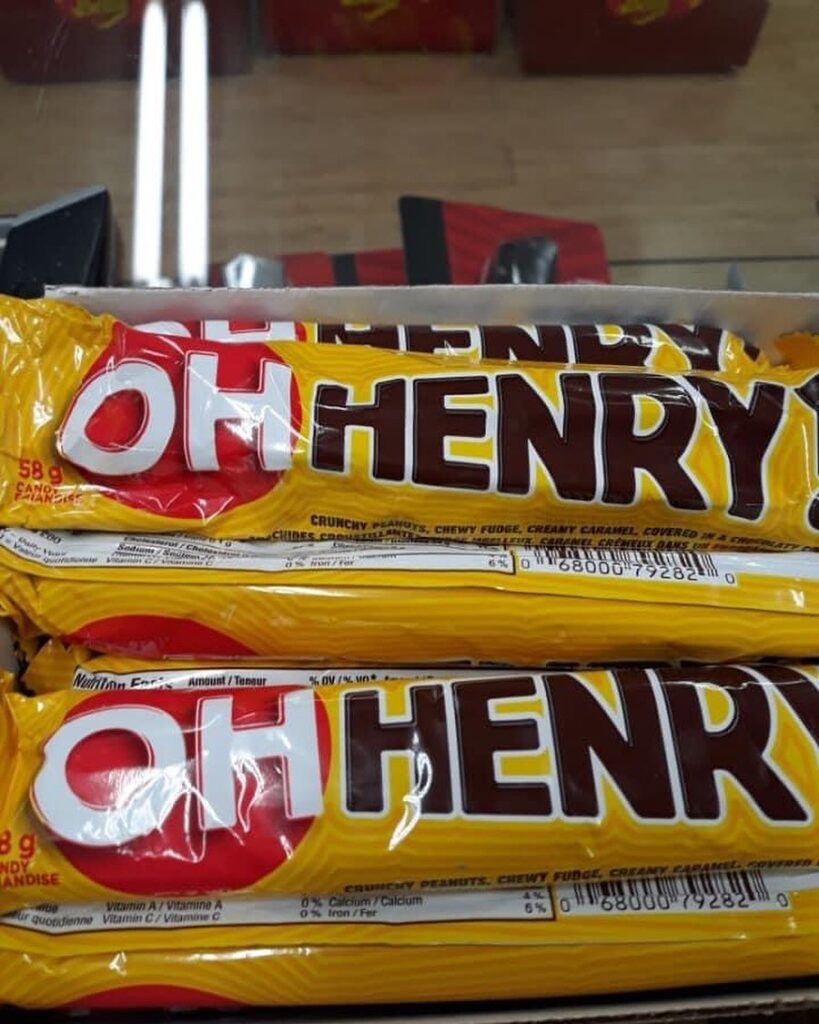
Oh Henry Bar is one of the most popular treats in America which contains peanuts, caramel, milk chocolate, and fudge. The name of the bar itself has a very interesting history. There are several opinions on how the candy bar was named Oh Henry. Rumor says that it was named after an electrician named Henry, who was working at the confectionary. He liked to flirt with girls, who were making candy, so when girls asked him favors they would call “Oh Henry “ to make him stay longer. Everything you’ve heard at the factory was his name, so some believe that it was named after him.
Others claim that it was named to honor famous American short story writer O. Henry. Some might tell you that Hank Aaron, a legendary baseball player, was an inspiration for the candy bar name.
Not only is the name of Oh Henry Bars controversial, but so are the origins of the bars. According to one of them, it was created by George Williamson, owner of the Williamson Candy Company in Chicago. Another theory claims that Thomas Henry was the one who created the recipe in 1910 and later sold the rights to use it to George Williamson in 1920. There is no obvious evidence or proof of how the chocolate bar was first introduced, but one thing is for sure: it is delicious and has been on the market for centuries.
4. Charleston Chew
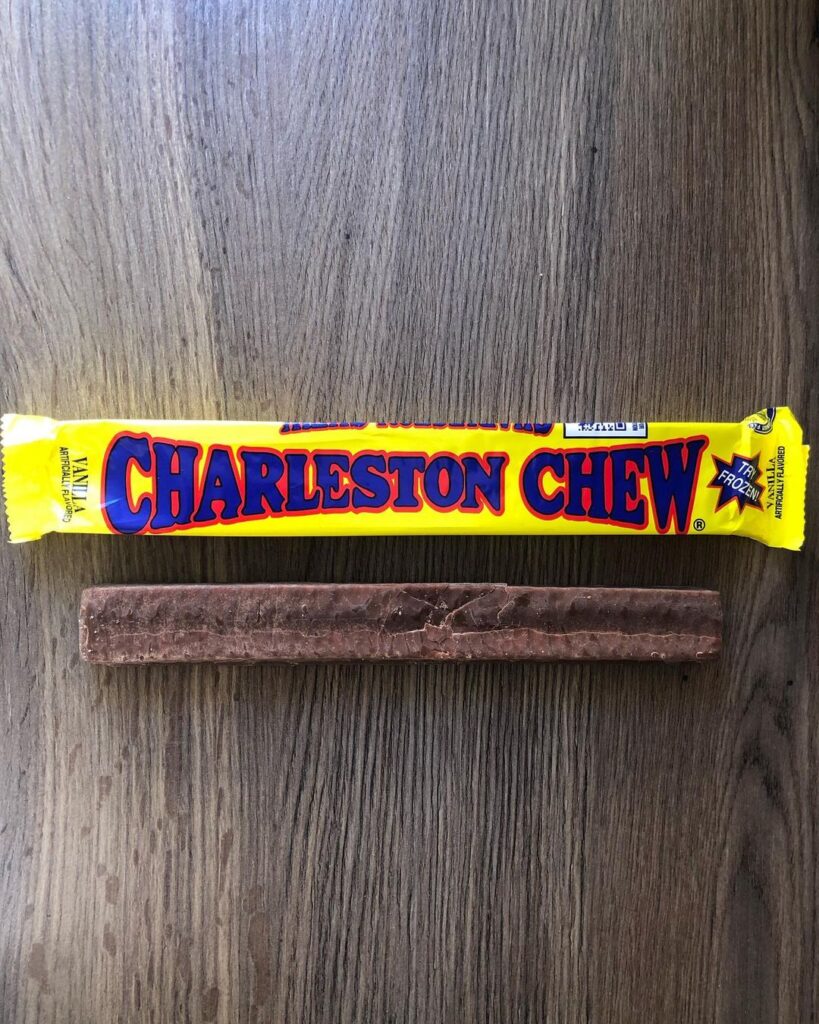
If you enjoy lightly flavored sweets, then Charleston Chew might be your favorite candy bar. The most common bars include chocolate-covered vanilla, chocolate or strawberry-flavored nougat, as well as miniature chews. Some enjoy them at room temperature, while others prefer frozen ones. They like to crack candy into small pieces, which creates the famous “Charleston Chew Crack.”
The start of the company has an unusual history. Donley Cross was an actor in San Francisco who was injured on stage. Having finished his career because of the injury, he decided to continue in candy-making. Donley created a candy factory with his friend Charlie Fox. They called it the Fox-Cross company.
The first candy bars launched were Nu Chu, but the one that brought great success to Fox-Cross was Charleston Chew. Candy was named after a famous dance at the time, Charleston. Donley and Fox were trying to benefit from the dance craze about Charleston by that time. In no time Charleston Chew became one of the most popular candy bars during that time.
5. Chuckles
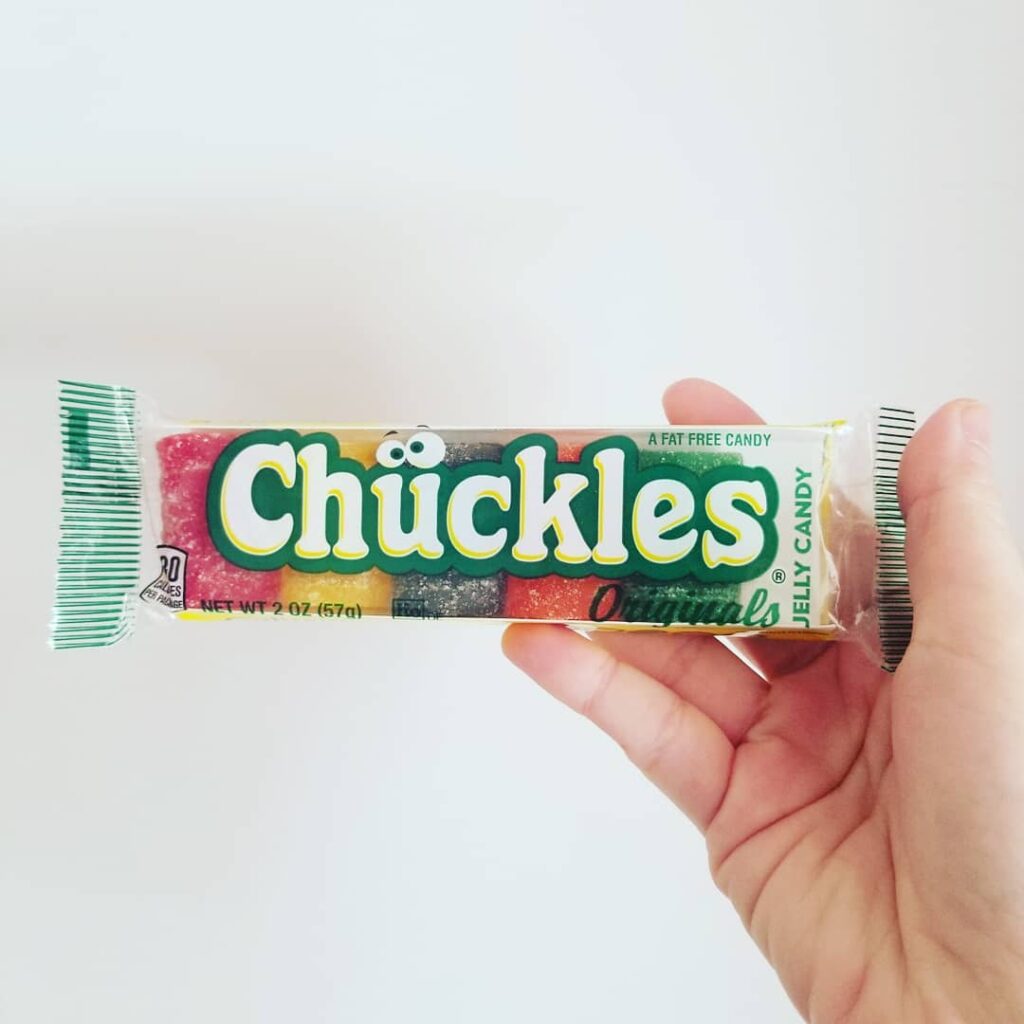
Chuckles were introduced in 1921 by marshmallow maker Fred Amend. As the name states itself, it is created to make people smile with sweetness while eating fun-flavored jelly. The main goal of Fred Amend was to create candy for sweet lovers who could not afford chocolate by that time. In the beginning, Chuckles candy were hand wrapped, and the sugary surface of the jelly, which was created by Amend himself, solved the sweat problems outside of it.
During World War II, already popular candy became a huge target for advertising. Great marketing and slogans made Chuckles appealing to people. Who would say no to “5 flavors for 5 cents?” Or who would not buy the “best candy in town?”
Chuckles sells candies in the colors red, yellow, black, orange, and green. They are fun to eat. It might have been your grandparent’s favorite activity as a child to group them into flavors and colors. Fred Amend played very well to win a place in the hearts of the biggest lovers of sweets, the children.
6. Goobers
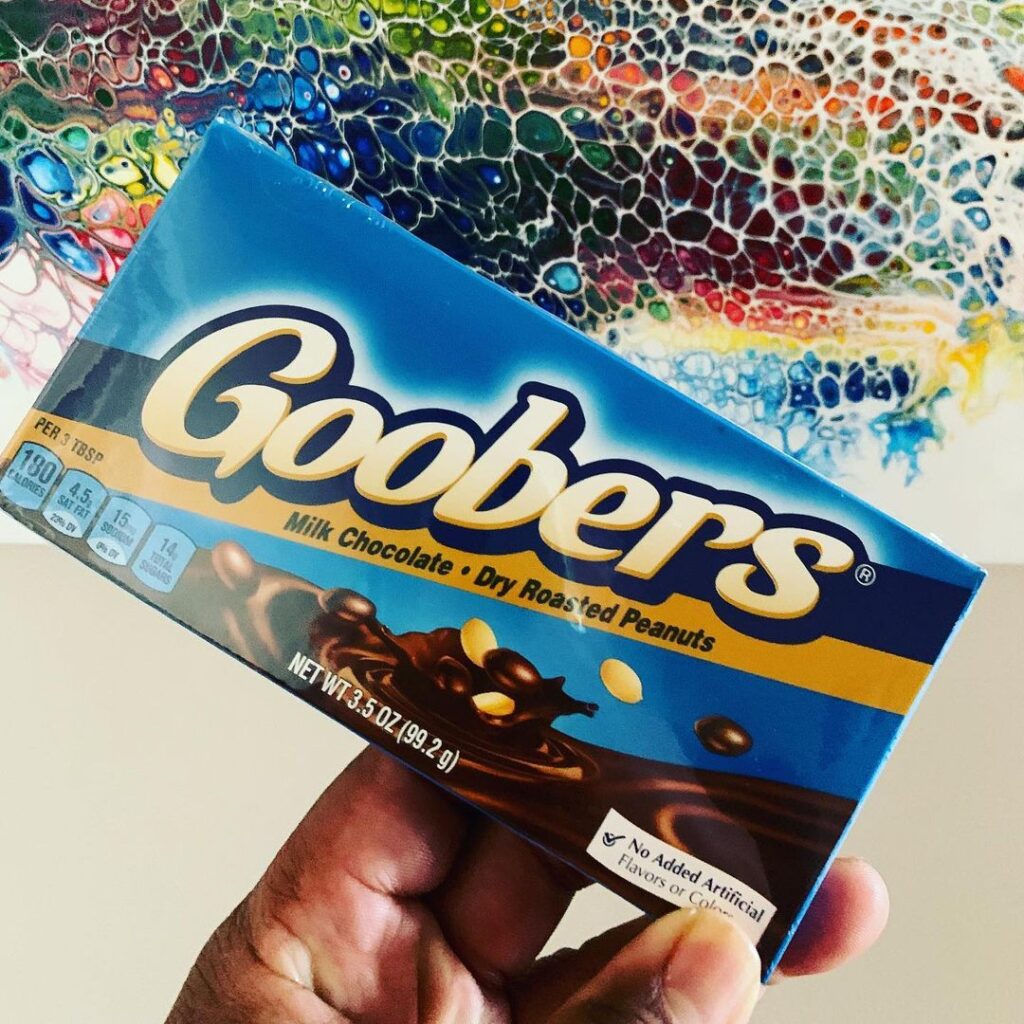
Goobers, a popular candy from the 1920s was first introduced in 1925 and is a chocolate-covered freshly roasted peanut snack. After the introduction, Goobers became very popular candy to eat at the movie theatre along with popcorn. Created by Blumenthal Brothers Chocolate & Cocoa company in North Carolina. It got its name from that area, where peanuts are referred to as goobers sometimes. It’s not only a snack but very popular among cooking enthusiasts, who are using goobers in their recipes, like brownies or ice cream.
There is nothing special about the Goobers. You ask for chocolate and peanuts, and you just get chocolate and peanuts. But Albert Einstein’s famous quote, that genius creates something simple and does not make it complex, applies to Goobers excellently. Everyone enjoys eating simple, fun, and delicious treats.
7. Peanut Chews
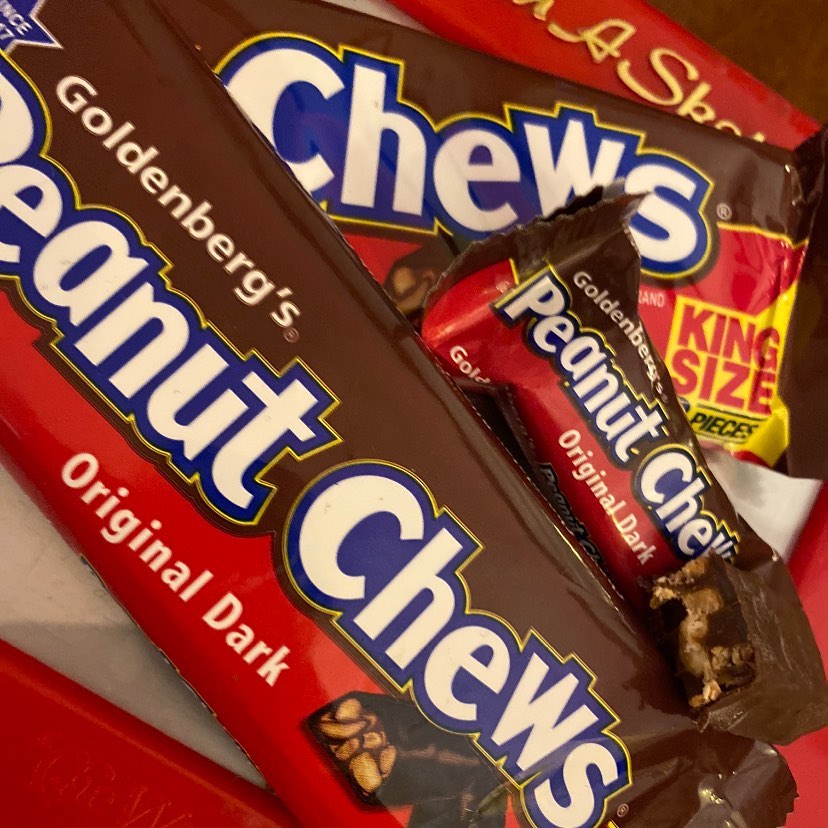
America’s love for peanut flavor is not a secret. Peanut Chews were introduced in 1917. Like many candies during that time, it was used as a soldier’s daily ration during World War I. They were given to troops to fuel them with energy. In 1921, Harry Goldenberg was the first to create and package Peanut Chew candy for retail sale. Later, in the 1930s, candy was converted from bite-sized chews to full-sized candy bars. Nowadays, they offer dark chocolate, milk chocolate, or retro Peanut Chews.
The original flavor of the candy was vegan friendly because it contained no milk or eggs. Later Just Born made changes in ingredients as well as packaging. He was willing to expand the Peanut Chew market beyond Mid-Atlantic states. After failing to do so, the company decided to stay on the grounds of their home region. Goldenberg’s name became associated with Peanut Chews. Some people may even refer to it as Goldenberg Chews or just Goldenberg’s. Peanut Chews has already celebrated its 100th birthday and as it seems it is going to stay in the market a lot longer.
8. Crunchie
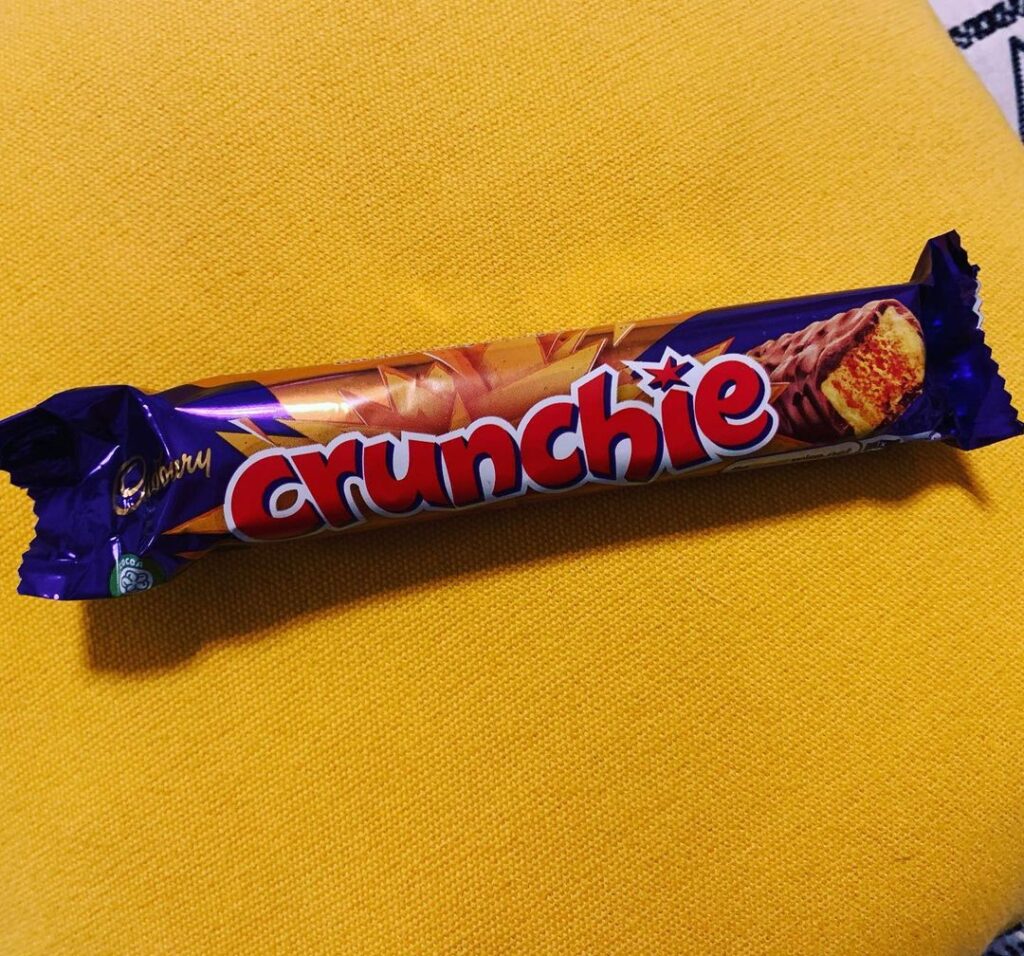
Crunchie originated in Australia, under the ownership of Cadbury’s confectionery and dates back to 1929. It is honeycomb toffee, which is known as “sponge toffee” in Canada and the USA, and “honeycomb” or “cider” in the UK. It is available in different sizes – from bite-sized candies to king-sized bars. Cadbury’s Crunchie is widely spread and consumed in different countries throughout the world. It is known as a “sweet hit,” and it provides an energizing treat.
Crunchie is very popular among youngsters, but not necessarily in the older generation. Advertising also targeted the younger generation with a sense of fun. “Get That Friday Feeling” was the slogan that attracted young adults more than older ones. Maybe your grandparents enjoyed it back in the 1920s when they were teenagers.
Over the years, Cadbury offered limited editions of various Crunchie flavors, which included Crunchie white chocolate, Crunchie mint, Bourbon Crunchie, etc. Crunchie, like many other chocolate bars, is now available as an ice cream bar or in a cheesecake flavor.
Bottom Line On 1920s Candy
Over the years, candy manufacturing techniques and varieties have changed significantly. But one thing stays the same for people with sweet teeth – you can find candy bars or chocolate that will satisfy your desires in all the decades. So, have you already decided which candy from the 1920s is your favorite? Please share your thoughts with us in the comments section below.
Candy Era

Nato is a content writer and researcher with a background in psychology. She’s passionate about writing about the candy industry and exploring the cultural significance of sweets and treats. She believes that the stories behind our favorite snacks can reveal a great deal about our values.
Please leave a review or any memories of this snack in the comments below. Thank you!
Click here for a full A-Z list of Snacks and Candy
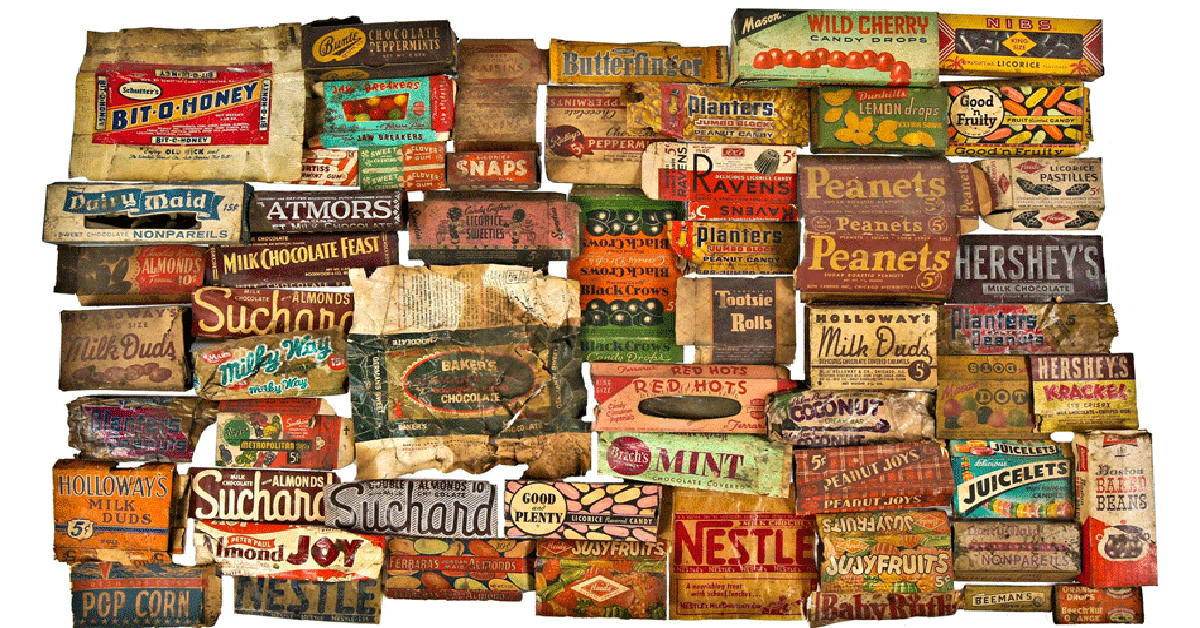
Ole sol chocolate bar…….hated the taste of it.Had a friend who had one about every day in high school.